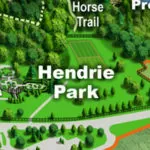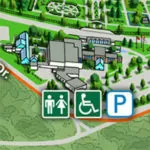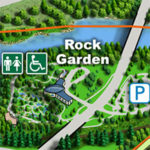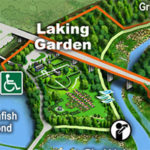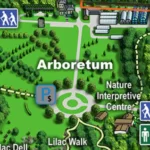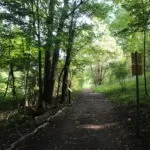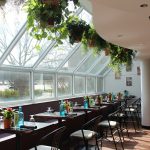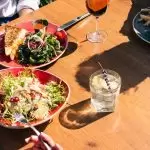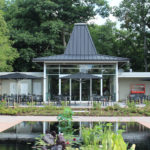| Membership | Price |
|---|---|
| Student | $55/year |
| Single | $85/year |
| Single Plus | $120/year |
| Family | $130/year |
| Family Plus | $175/year |
| Contributing | $250/year |
| Supporting | $500/year |
| Sustaining | $1,000/year |
| Benefactor's Circle | $2,500/year |
| Director's Circle | $5,000/year |
| President's Circle | $10,000/year |
Turtles
Turtle Conservation at RBG
Royal Botanical Gardens’ Nature Sanctuaries contain two of the largest coastal marshes remaining on western Lake Ontario. With a variety of habitat adjacent to these extensive wetlands, it’s no surprise that RBG is home to four native turtle species. Sadly, turtles face a variety of direct and indirect threats to their habitats and livelihoods — as a result, all of Ontario’s turtles are listed as species at risk. Today, despite being in a protected area, only four of the seven species native to RBG’s lands can still be found here: Northern Map Turtle, Midland Painted Turtle, Snapping Turtle and Blanding’s Turtle.
Protection and preservation of our remaining native turtle species is crucial to maintaining biodiversity in our region. Through wetland restoration projects and the Site-Specific Recovery Plan, RBG works to restore viable habitats and protect turtles and other at-risk species. Help from caring visitors and neighbours has proven invaluable to these efforts — community members have helped save hundreds of hatchlings!
Learn more about conservation efforts in Ontario and find resources through the Ontario Turtle Conservation.
Reporting a turtle on RBG Property
Do not post the location of any turtles publicly on social media.
Seeing turtles in the wild is very exciting! Unfortunately, when locations of turtles are shared online, it can attract lots of people to come and crowd the area, causing stress to the turtle or damage to its nest. Our native turtle species are also targeted by poachers for illicit pet trade and consumption. Poachers monitor social media for tags and pictures that could help them locate turtles and nests.
Turtles have enough natural predators to deal with — when reporting information about turtles through social media, please do so discretely with a direct message to RBG.
What to report:
Please report any of the following found on RBG properties. Note: turtles spotted near the shoreline or wetlands do not need to be reported.
Report to Royal Botanical Gardens:
- Nesting turtle: nesting-in-progress is an urgent report. If the turtle appears to be digging with its hind feet or looks perched with its rear end planted in the dirt, it is likely nesting. Give the turtles plenty of space and do not approach it.
- Predated nest or dead turtle: It is important to report to RBG for our understanding of habitat use, nest success rates and mortality.
Report to other parties:
- Clearly injured turtle (blood is visible): For turtles located at Princess Point, Rock Garden and Arboretum, call Hamilton Animal Services (905-574-3433). For turtles located in Hendrie Valley and Laking Garden, please call Burlington Animal Services (905-335-3030).
- Turtle crossing the road: If it is safe for you to do so, help the turtle cross the road in the direction it is heading. If it’s not safe for you to stop or help, call the Dundas Turtle Watch hotline (289-775-1351).
How to report to Royal Botanical Gardens:
- Inform an RBG staff member or volunteer (if nearby).
- OR privately message RBG’s social media accounts (Facebook, Twitter, Instagram)
- OR call RBG’s front desk (905-527-1158).
Please include:
- Who: your name and contact information.
- What: the species if known, number of turtles and what they are doing. Photos are helpful to identify and locate turtles, but only take photos if you can do so safely and without crowding (and thereby harassing) the turtle.
- Where: as specific a location as possible. Map apps on your phone can pinpoint your exact location.
- When: date & time of your observation. Timely reports are key!
Turtle Threats and the Site–Specific Recovery Plan
Impacts from human activity are removing turtles from our landscape faster than they can naturally repopulate. Loss, degradation, and fragmentation of habitat from development of shorelines and wetland-adjacent lands, direct mortality from boats, road vehicles, and poachers, as well as environmental threats from climbing nest predator populations, non-native and invasive species have pushed our native turtle population into decline.
Studies have shown removing just one or two wild turtles a year over a 50-year span can extirpate a region’s population, meaning a species can disappear in our lifetime.
In 2014, RBGs Board endorsed a Site-Specific Recovery Plan to address this decline in addition to our other conservation efforts. Based on years of data and research collected from the region, the plan seeks to mitigate threats to the long-term survival of RBG’s turtles and restore populations to sustainable levels, reflecting the available habitat and historic population sizes. Our goals are to reduce adult turtle mortality, improve habitat quality, increase population recruitment rates and provide education and stewardship opportunities.
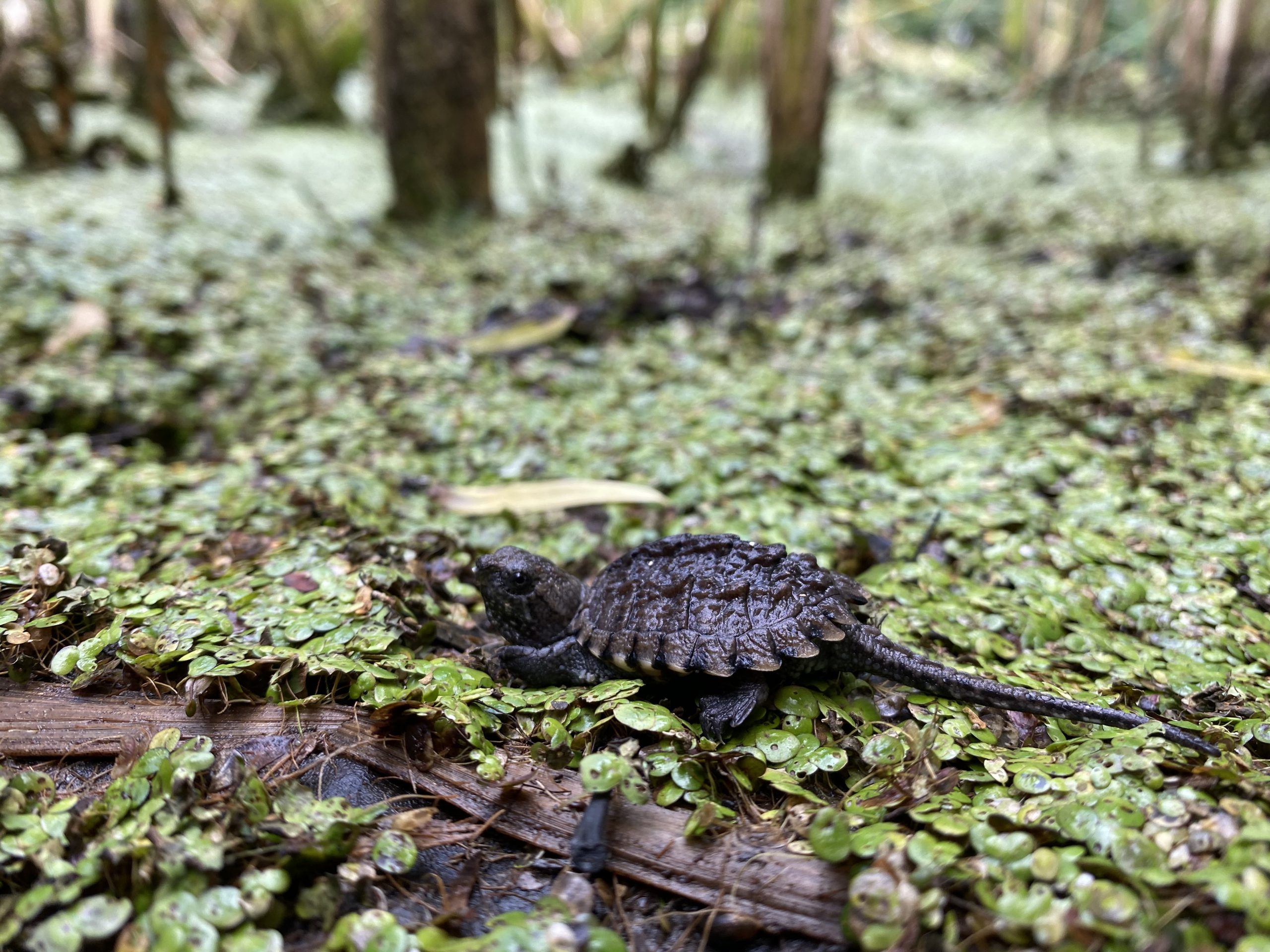
Specific efforts include:
- Recreating lost nesting habitats in the developed upland areas
- Working with partners to install roadside fencing to reduce road mortality
- Measures to protect nests and eggs from urban predators
- Management of priority invasive species
- Continuation of programs to restore native marsh vegetation
- Ongoing monitoring of turtle populations
- Leading local education and stewardship to encourage safe driving, turtle-friendly fishing practices and litter reduction
Note: Until standardized wildlife corridor practices are established within the local municipalities for roads, other organizations are implementing interim roadside barriers along some of the local roadkill hot spots.
Turtle Nesting & Hatchling Season
Nesting Season
End of May through July
Nesting season is a particularly vulnerable time for turtles. During this period, female turtles migrate further away from the wetlands in search of a spot to lay their eggs. They will bury their eggs in dry, sunny, open areas where soil is warm and loose enough for digging. The number of eggs laid varies by species but averages around three to 45 eggs.
RBG’s response during nesting season is vital to help rebuild local turtle populations. We ask the public to be attentive to turtle activity during this time and report nesting turtles on RBG land — collective efforts are an integral part of the success of RBG’s turtle conservation efforts.
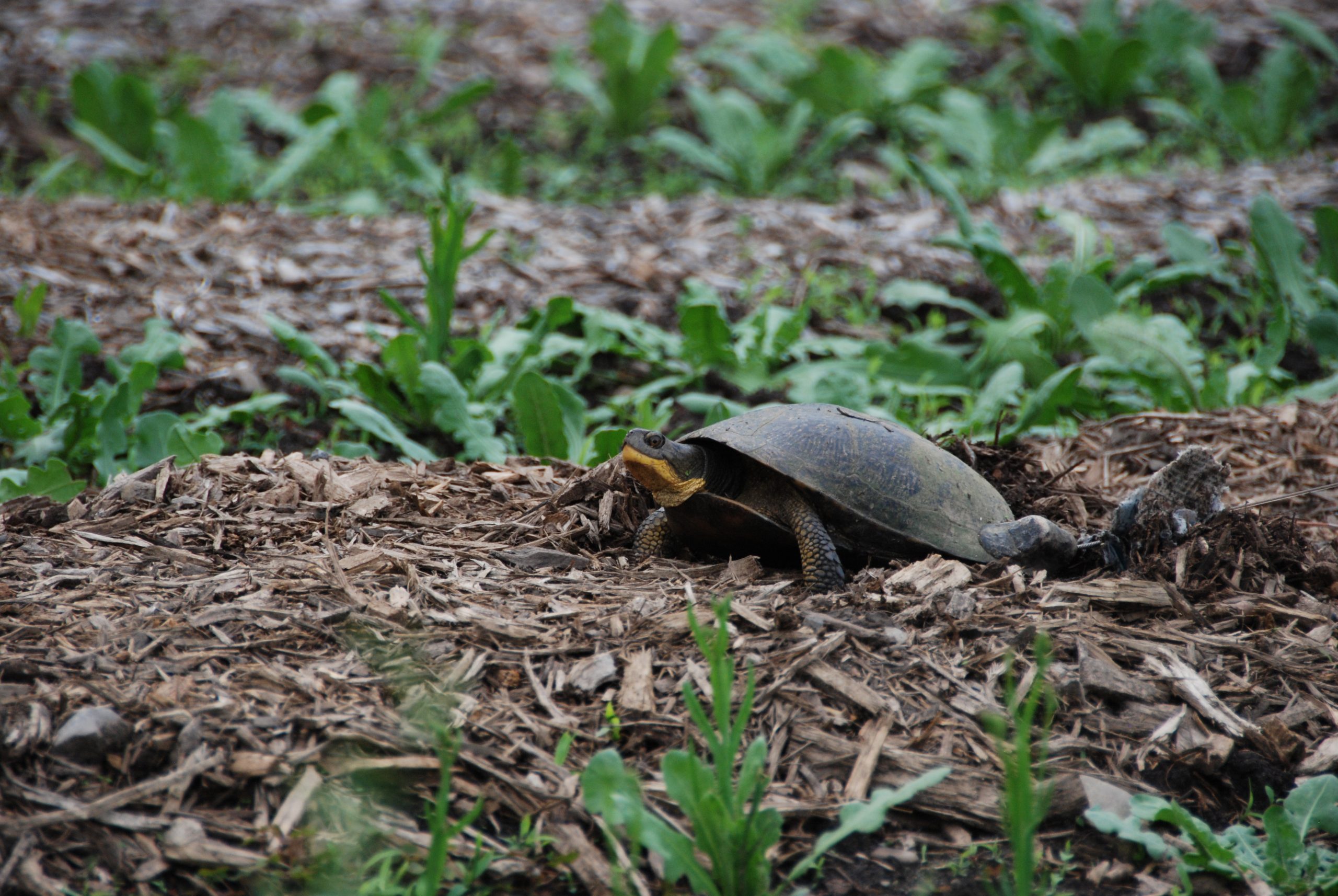
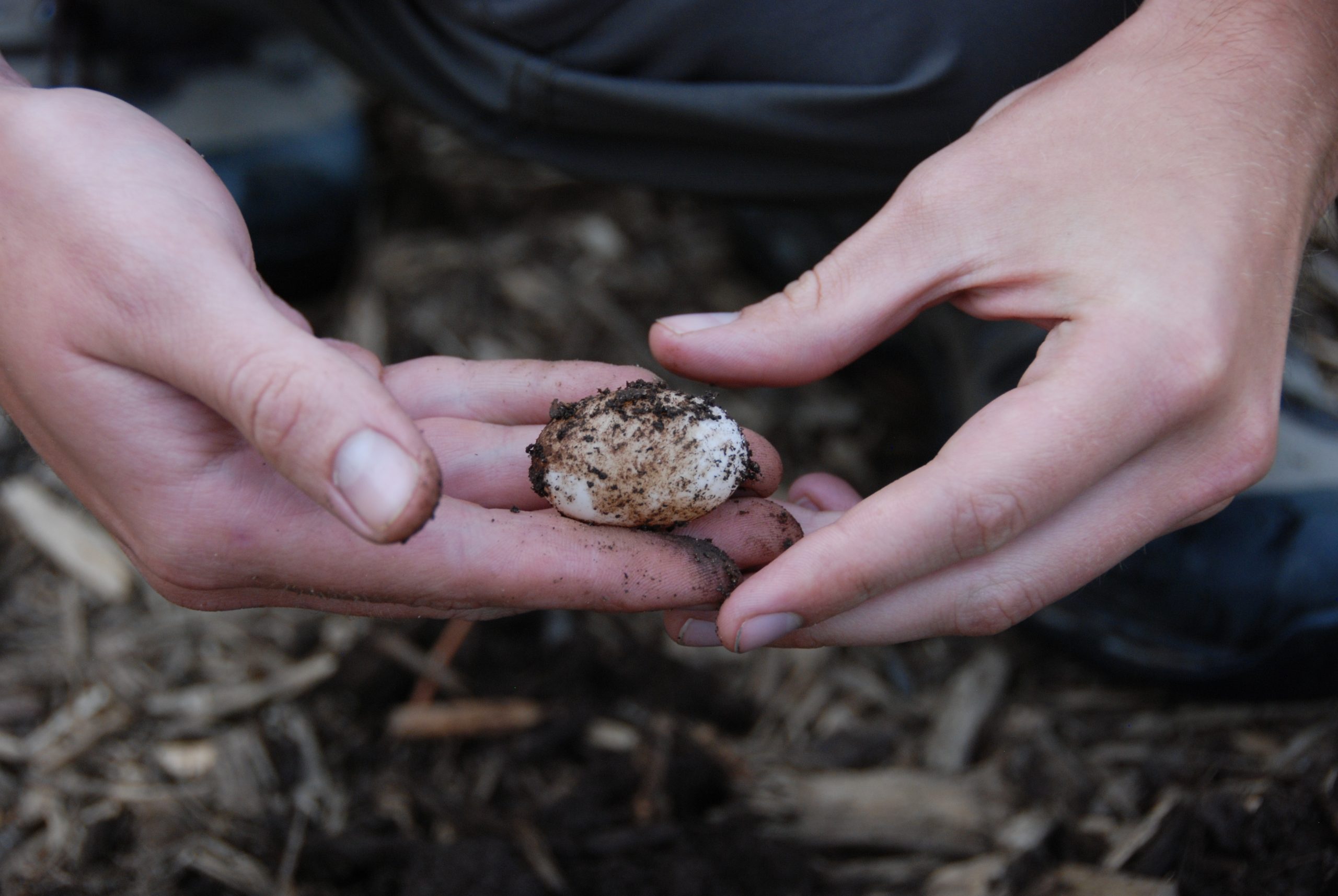
Hatchling Season
August to October, April to May
Most hatchlings emerge between August to October, but some, typically Painted Turtles, will spend winter in their nests before emerging the following spring. Most eggs will not reach maturity — it’s estimated that for every 1,400 Snapping Turtle eggs laid, only one will survive to adulthood. Low hatchling survival rates make turtles more susceptible to population decline, making RBG’s efforts all the more necessary.
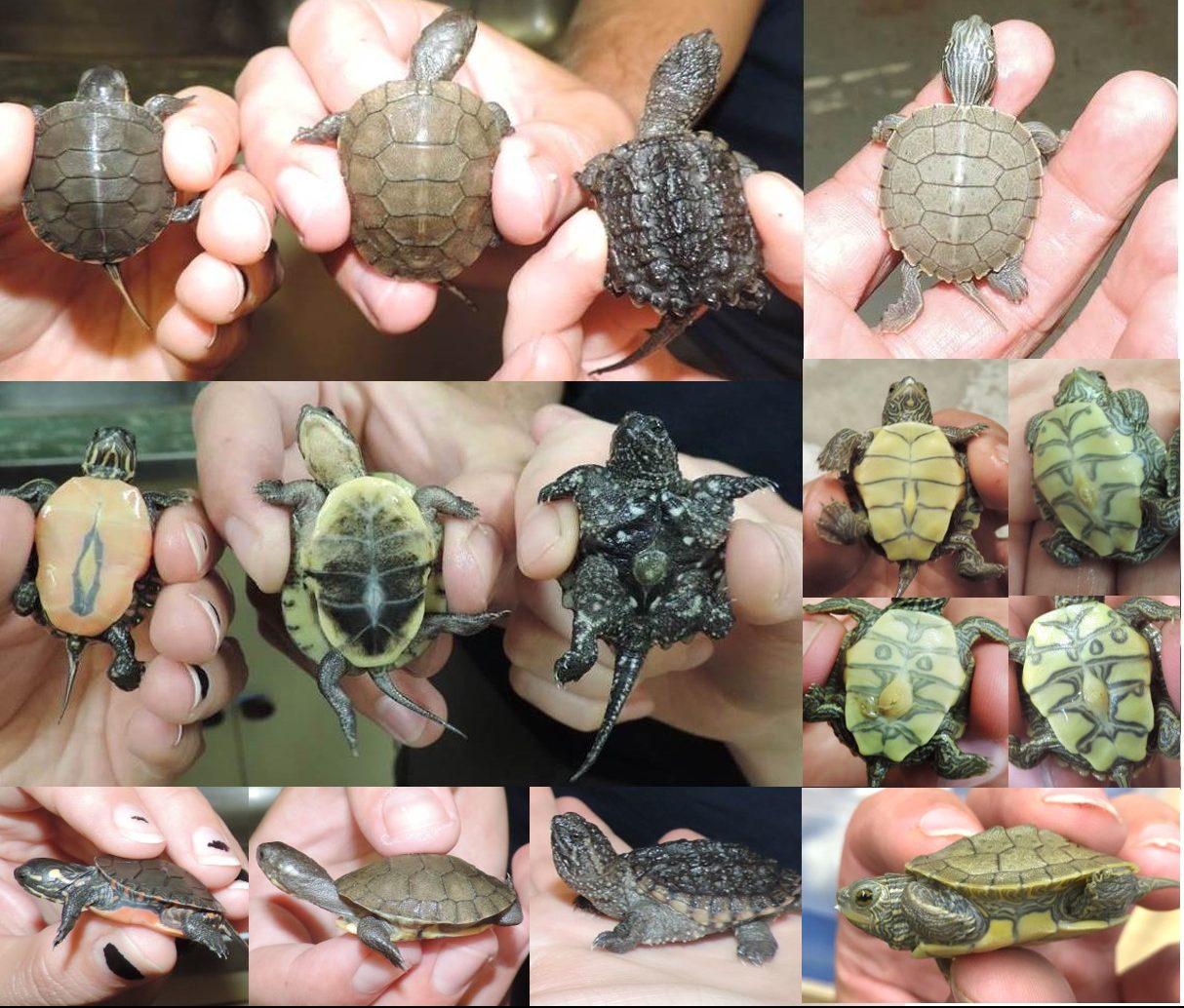
Turtles Native to Ontario
The Eastern Musk Turtle, Eastern Spiny Softshell and Wood Turtle are all believed to be extirpated from this region.
Midland Painted Turtle
Lifespan: 30 – 40 years; females mature after 6 – 10 years
Chrysemys picta marginata
Description: Smooth black carapace (upper shell) with red or orange markings, as well as yellow stripes on its head and red on its neck. Painted turtles also have a yellow or orange plastron (lower shell, “belly”) with a distinct “butterfly” mark down the middle. Painted turtles can be mistaken for non-native Red-Eared Sliders, who have yellow stripes on their head and a red mark near their “ear”.
Northern Map Turtle
Lifespan: 20+ years; females mature at 10 years
Graptemys geographica geographica
Description: Black carapace (upper shell) with fine yellow lines that resemble a topographic map, and yellow stripes on head and limbs.
Snapping Turtle
Lifespan: Average 40 years; females mature after 17 years
Chelydra serpentina serpentina
Description: The largest freshwater turtle in Canada, Snapping Turtles are easier to spot. Light brown or black carapace (upper shell), long, serrated tail and a smaller, cross shaped plastron (lower shell).
Blanding’s Turtle
Lifespan: Up to 77 years (max); females mature after 14 years
Emys (Emydoidea) blandingii
Description: Yellow chin and throat, black or greyish-brown carapace (upper shell) and protruding eyes.
Blanding’s turtles are endangered.
How You Can Help
Everything we do has an impact. Our actions can directly help or hinder our native turtles — RBG relies on help from community members to be able to complete the critical work needed to have balanced, natural spaces for generations to come.
Encountering turtles
- Do not crowd turtles. Turtles are afraid of us. Getting too close or surrounding a turtle can cause it to be stressed and abandon its nesting efforts.
- Report on-land turtle sightings at RBG associated with nesting. When people lend their eyes and ears, we’re able to promptly respond and potentially protect the nests from predators!
- Do not feed wildlife. Wildlife feeding inflates populations of species who also happily eat eggs of turtles and birds and unbalances the ecosystem.
Turtles on the road
- Drive safely. Dozens of turtles are killed crossing roads around RBG every year. What looks like a rock could be a turtle trying to get home. Pay close attention to the roads during nesting season and in hotspot areas (Old Guelph Road, Plains Road West, Cootes Drive, Olympic Drive, and King Street East).
- Help them cross the road. If it is safe for you to do so, you can help bring a turtle across the road. Safely move a large turtle with a shovel, tarp or plastic container, and always bring them in the direction they were heading. Never pull on a turtle’s tail as it could dislocate its spine, and always wash your hands after handling them. Check out the Toronto Zoo’s video on how to help a snapping turtle cross the road.
- Report roadkill sightings. To help highlight road crossing hotspots report your turtle roadside sighting in iNaturalist to either Road Kill Cootes Paradise and or global roadkill projects.
Pets and wildlife
- Do not litter. While predation is natural, food left on trails or litter from unsecure garbage cans attract unnatural numbers of predators to the ground nests, destroying entire nests. Littered fishing lines and lures can also directly hurt turtles in our waterways.
- Do not release pet turtles into the wild. Releasing unwanted pets like the non-native Red-eared Slider turtles into local wetlands not only risks introducing disease to native turtles, but also increases competition for limited resources like food, basking areas, and nesting sites. Contact a pet store or reptile rescue about re-homing your pet.

Symbolically Adopt a Blanding’s Turtle
Symbolically adopt a turtle today and ensure RBG’s Blanding’s Turtles have a chance to survive. You can help ensure turtle populations are restored to sustainable levels, which is so important for preserving the biodiversity of our local environment.
Additional Resources
RBG Resources:
External Resources:
- Turtle Conservation Network
- Reptiles and Amphibian Conservation – Scales Nature Park
- Dundas Turtle Watch
- Local Roadkill Reporting – iNaturalist
- The Last Remaining Breeding Female Blandings Turtle in Cootes Paradise – The Hamilton Spectator
- Cootes Drive 2021 Projects Summary ICOET Conference (VIDEO)
Videos

Support Conservation at RBG
These conservation projects are possible thanks to the generous support of RBG Members and donors. With a donation to Growing up Green, you can ensure an active, vibrant and healthy future for the children of today and tomorrow through our horticultural and conservation projects.
Royal Botanical Gardens (RBG) is the largest botanical garden in Canada, a National Historic Site, and registered charitable organization with a mandate to bring together people, plants and nature.

